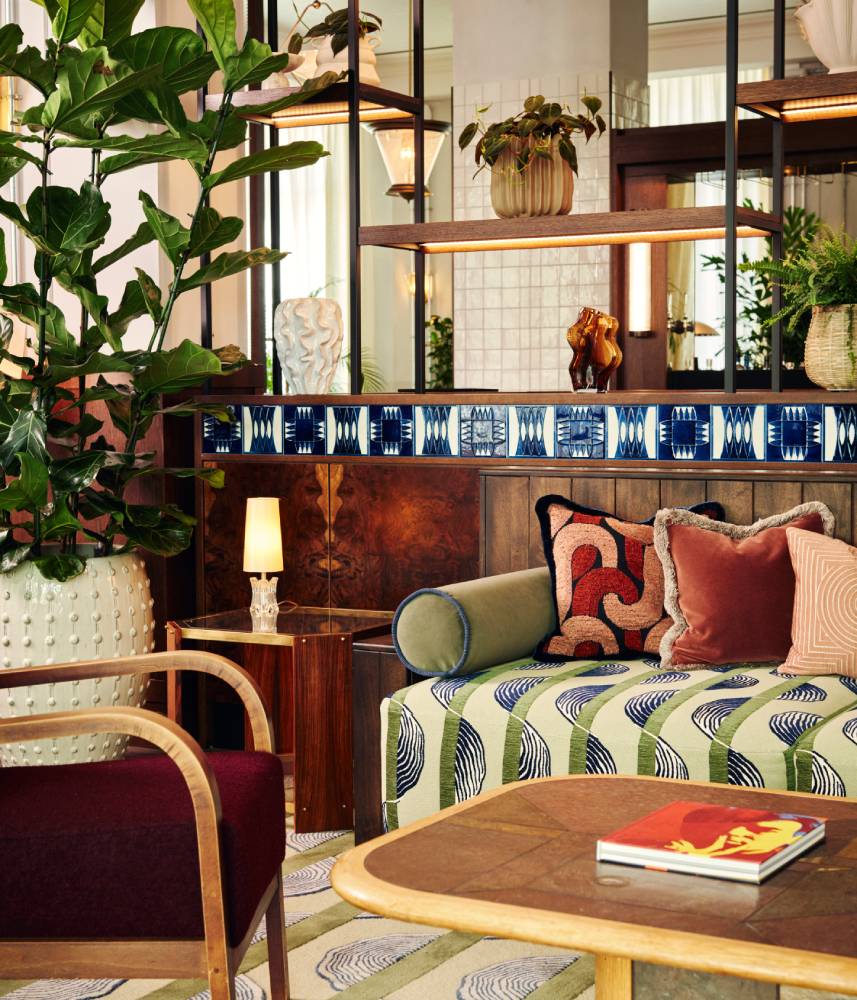Future gen design: Nathalia Garcia, Interior Designer, tp bennett
The next generation of creative talent on radical ideas, lessons learnt and tomorrow’s design landscape.

Garcia started her career in Brazil as an interior designer before moving to London where she completed her MA in Interior Design at the Royal College of Art. Following a year at Materials Council as a Materials Researcher, she joined tp bennett in 2022, completing projects including the newly completed fit-out of Viasat + Inmarsat in the old Bloomberg HQ in London. Part of the Mix 30 under 30 Class of 2023, here Garcia offers up insights on lessons learnt, career-defining projects and advice for her younger self, as part of out regular series highlighting upcoming talent from the world of commercial interiors.
What do younger designers bring to the table?
We dare to ask the bold questions that others might overlook, often uncovering hidden gems in the obvious. Our curious energy and strong desire to learn drive us forward, along with a love for new technologies and commitment to sustainability. And let’s be honest, our ambition and need to flourish propel us to innovate and excel in the industry.
What are the greatest challenges young designers face?
One of the most significant personal challenges is acknowledging the battles with our own ego. It’s crucial to always remember the importance of genuinely listening to and learning from our colleagues, consultants, partners or clients, and not losing ourselves in our own thoughts.
What does creativity mean to you?
To me, creativity is an intrinsic part of being human. We all possess the ability to imagine, dream and create. Personally, I see a creative mindset as approaching life with curiosity and an experimental outlook, always asking ‘what if?’. The trick then lies in translating abstract thoughts into tangible forms that resonate with others.
 ©Hufton+Crow
©Hufton+Crow
What is your radical idea for the future of design?
A return to the ‘real’ things. As the industry moves forward into new and exciting realms of digital technology, automation and artificial intelligence, I think we will come to desire a shift towards the pursuit of simpler and more grounded ideas and ways of designing. It will force us to have more intention into our ‘real’ interactions and choose to return to the essential basics of what makes us human.
What makes you most worried, and what makes you most hopeful, about the future of design?
I’m hopeful about the potential for sustainable design like never before. The world is in desperate need of creative solutions – as I type, there are cities being completely destroyed – and there is a pressing need to mitigate wastefulness and appreciate natural resources. Coming from Brazil, I can say this with confidence. The world requires thoughtful leaders who can design solutions that consider the three main pillars of sustainability: people, planet, and profit.
Tell us about a project you worked on that has most shaped your work.
I’ve been involved in some exciting workplace projects for tech occupiers. I love the unique energy these companies to the table, looking for a strong sense of identity and belonging in their workspaces. One of these is the new London headquarters for Viasta+ Inmarsat which was a creative exercise in developing the company’s collaboration and innovation within its workspace. The workplace promotes innovation, collaboration and sustainability – drawing parallels between the dynamic orbital paths of satellites, the core of Viasat + Inmarsat’s global satellite communications.
The world requires thoughtful leaders who can design solutions that consider the three main pillars of sustainability: people, planet, and profit.
What is the greatest lesson you’ve learnt?
The greatest lesson I’ve learned is to embody the change I wish to see in the world, rather than getting caught up in complaining. Complaints often just bring everyone down and lead to passive acceptance of the status quo. I’ve found that simple gestures, like a quick smile or a small act of generosity, can make a big difference and shift perspectives in a positive direction.
Who are you inspired by/what are the inspiring projects that have shaped your approach to design?
I find most inspiration in observing how spaces can profoundly influence human behaviour and perception. Creating environments that foster a sense of belonging inspires me, as these spaces provide the backdrop for intimate connections to thrive.
What do you love about the industry, and what do you hate?
What I love about our industry is its creativity and the dynamic environment it fosters. Creativity is at the heart of everything we do, allowing us to innovate and shape experiences in unique ways. However, what frustrates me at times is the assumption that our industry operates like any other. This post-pandemic world of virtual meetings, while necessary for collaboration, can sometimes lead to isolation within our own project bubbles and hinder the flow of creativity and collaboration that I find so unique.
What advice would you give to your younger self?
I’d advise my younger self to embrace my uniqueness fully, rather than trying to conform. Understanding that different personalities require different approaches has been a key lesson. Embracing my quirks makes me stand out—so smile at strangers, let kindness and generosity overcome fears. Prioritise mental health, practice breathwork in your 20s, and remember to go with the flow while approaching everything with bravery.

